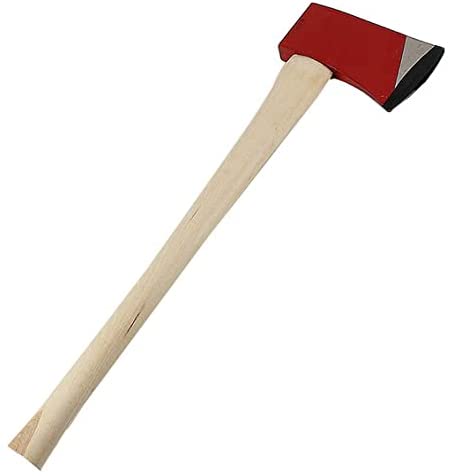If you were wondering if there is a type of axe for every country, state, city, and possible occupation, you’d almost be right. It’s true that there are dozens of types of axes and axe heads. Which one you will buy depends on your needs, preferences, and whether you have a collector’s zeal to collect different types of axe heads. Dayton axes are among the most popular you can find today.
Dayton axes are axes that originated in the lumber industry. They are sturdy axes used to fell massive hardwood trees, so you can imagine how tough these axes can be. As you can probably tell from the name, Dayton axes originated in Dayton, Ohio.
Here is what you need to know about these axes and what sets them apart from similar axe types.
Table of Contents
What Is a Dayton Axe?
A Dayton axe is a heavy felling axe with a curved blade . These axes were (and still are) very popular in the logging industry. Their primary purpose was to fell trees. Since their job was to actually bring down massive trees, Dayton axes had to be sturdy and withstand hard conditions.
Many popular axe types from the United States got their name because of their geographic area of origin. The Dayton axe is no different. This axe was first developed in Dayton, Ohio.
The geographic origins of the Dayton axe help explain some of its unique features. Since the area around Ohio is mostly hardwood forest, loggers had to use a sturdy, tough axe to cut down the hardwood trees the local industry relied on. Studying axes in the United States offers an interesting insight into how the country developed, including specific regional differences.

Design Features of a Dayton Axe
The Dayton axe is similar to other felling axes, such as the Hudson Bay axe, but it has some design features that set it apart. Here are the most distinctive characteristics of the Dayton axe.
Heavy axe head
A Dayton axe has a heavy axe head, even compared to other felling axes that are similar in design. Usually, they weigh about 3.5-5 pounds. This reflects the type of wood Dayton axes were usually used for. The forests around Dayton, Ohio, were full of sturdy hardwood that needed a heavy axe head to cut down.
Distinct blade shape
Besides the weight, the shape of the axe head is also interesting. Dayton axes have one single blade—the other side of the head is flat and close to the handle. The blade is slightly curved, flaring outwards at the end. That makes this axe popular for outdoor work because the shape makes it a lot easier to cut down big trees and do other projects that pop up.
Long handle
The Dayton axe is a full-sized felling axe, which means that its handle is a few feet long. It needs that length to give a logger enough leverage to cut down a tree and get through a thick hardwood tree trunk.
History of the Dayton Axe
When axe aficionados sit around talking about axes, they sometimes get into the history of different types of axes. Often, we don’t have a lot of recorded history about the axe that can give us definitive answers about its origins, but we have axe lore—stories that woodsmen passed down through their families about the tools that defined their lives.
We know from the name that Dayton axes originated from Dayton, Ohio, and the surrounding regions. The Dayton was developed by loggers and other people working outdoors in the Dayton region. As mentioned above, this region of the United States was characterized by lush hardwood forests, which affected the development of the Dayton axe.
Regions all across the United States had their own axe types and by the early 20th century, about 200 different axe types were floating around! By 1920, manufacturers decided this was all too confusing and standardized a chart of axe patterns, defining features such as blade shape and size. This narrowed the list of axe types to 30. Luckily, the Dayton axe made the cut.
Modern Brands of the Dayton Axe
The Dayton axe has origins that are a few centuries old, but it is popular among modern axe wielders to this day. Here are some brands that still make the Dayton axe:
- Council Tool, one of the most popular American axe manufacturers
- Peavey Manufacturing, a 160-year-old manufacturer
- Toughstrike, whose Dayton axes are proudly USA-made
Final Thoughts
Dayton axes are still one of the most popular axe types today, even though there aren’t as many loggers felling hardwood trees around Dayton, Ohio, as there used to be. Its curved, heavy blade makes it perfect for heavy-duty jobs and outdoor work.
